This is Post 1 of 3 about my pursuit of the Triple Crown of Long-Distance Hiking. This one is about the Pacific Crest Trail. Look for two more posts soon!
Introduction – 1993, 1994 and 1995

A lot changed while I pursued the Triple Crown over a span of 25 years. I aged from 42 to 67 years old and managed to complete three thru-hikes with ever improving gear, technology, and growing numbers of people hiking the trails. On the CDT in 2016, at 62 years old, I crafted my way northbound with strong feelings of optimism to overcome injuries and a slower pace. As one of the older thru-hikers on the AT in 2021 I respected need to “stay in my own lane,” while growing to love and appreciate the unique culture of the trail. But the increasing rate of wildfires, drought and extreme weather events along the trails concerns me more than it did when I hiked the PCT in 1996, a time when awareness of climate change was minimal compared to today.
My triple crown journey really started at a central Oregon home I was invited to in the fall of 1993. It was a gathering of people who had enough experience on the long trails to create a sense of awe to this much less experienced hiker. Ray and Jenny Jardine completed the Appalachian Trail earlier that year. I was surprised to hear they recently hiked two other trails: the Pacific Crest Trail (1987) and Continental Divide Trail (1992). Brice Hammack, whom I met while doing PCT trail maintenance earlier that year, completed the PCT and the AT in sections and was nearing completion of the CDT. Scott Williamson was just back from his first thru-hike on the PCT. Lesya Struz and Joris Naiman, whom I also met on trail projects near Portland, Oregon, facilitated my invitation. Inspired by the people I met that weekend, I hoped I could complete a thru-hike someday.
In the late summer of 1994, a gift was handed to me: a layoff notice from my job at a large corporation. After counting severance pay and freelance opportunities for short-term income, the enthusiasm for hiking the PCT in 1995 outweighed the immediate continuation of a corporate career. Within a few weeks of the layoff notice I excitedly traveled to the first official ALDHA-West Gathering in Oregon with knowing the event would kick-start preparations for the thru-hike! At the Gathering, the first five recipients received Triple Crown plaques: Brice Hammack, Alice Gmuer, Ray Jardine, Jenny Jardine, and Steve Queen. My first steps to the Triple Crown would start on the PCT at Campo, California on May 11, 1995.
In the winter of 1995 I was aware of the extremely high snowpack in the Sierra Nevada . On May 24, while approaching Idyllwild, the deep, icy snow on the steep approach to San Jacinto Mountain was just a preview. One month later I met a young section-hiker and aspiring author, Cheryl Strayed, who later traveled with me to Sierra City to skip the high snowpack in the Sierra for what we hoped was much less snow. This is called a flip-flop, and it would require a return to California to hike the areas I skipped. I would have preferred a continuous footpath without the flip-flop, but I decided to go Sierra City with Cheryl. On July 4 I hiked ahead of Cheryl, but we encountered the lingering snow on the Sierra Buttes. The conditions convinced me to leave the trail for three weeks and return to the southern Sierra where Cheryl and I exited the PCT at Trail Pass. Cheryl kept hiking northbound to the Bridge of the Gods on the Columbia River in Oregon not knowing where I had gone. Read more in a story I wrote for the Pacific Crest Trail Association.
I returned to the PCT on July 25 at Trail Pass. With some nervousness but great satisfaction I steadily hiked over snow-packed Forester Pass (13,200 feet). But the next day at Glen Pass I glared north at the solid snow as far as I could see, peak to peak. I was discouraged and nervous at the sight of continuous snow ahead, and I was alone at 12,000 feet above sea level! After descending the snowy north side of the pass at sat down near Rae Lakes while paying attention to the pesky Marmot trying to eat my part of my lunch. I knew I had to decide, and in that moment, I could not know how life-changing my choice might be. The risks of pushing northbound, alone, in such conditions were significant. Questions and thoughts ran through my mind as swift as the meltwater in the nearby creeks. The solitude in the snow-packed Sierra was intense, not what I expected or desired. “Where are they?” I asked silently. Obviously, they flip-flopped and were far north of where I sat. Most importantly, I assumed the snowfields ahead would slow me down. Logic overtook anxiety as I wondered, “with just a little more than two months until October, could I really finish a thru-hike to Canada? Doing some math, I would need to push every day at a pace of 31 miles per day to reach Canada before serious snowfall could put an end to it. Would bad weather block my progress to the border? Could I re-start a thru-hike in 1996?” The next question was the key. “Could I lighten my gear and streamline my approach next year and hike the PCT well?” Yes, I concluded. It justified what I would do. The next morning, I hiked back over Glen Pass and eventually caught a Greyhound to start my journey home…and eventually to the 1995 ALDHA-West Gathering two months later.
Pacific Crest Trail – 1996
The aborted 1995 hike was not a failure. I was determined to go ultralight on the trail in 1996. At the 1995 Gathering one I learned about a frameless, two-pound backpack made by Wild Things. I bought one, and I chose a tarp for shelter rather than a heavier tent. With a re-engineered approach to gear, hiking 30 miles per day was possible and even likely. Confident and evolved, I hiked out of Campo on May 8 with a long stride and gleaming eyes to the north. Having hiked 800 miles the previous year helped a lot, too. The difference was obvious on Day 1. In 1995 I camped at Hauser Creek. In 1996 I ate lunch at Hauser Creek! Apparently, most of the 150 thru-hikers started before me. It was not until Day 10 in Idyllwild when I met another PCT hiker.
On May 26, the second day after I departed Big Bear, a small wildfire burned on a nearby ridge that required a few miles of walking a road. I was happy with my 24 mile per day pace as I hiked into Mojave on June 6. I knew safe, drinkable water would be an issue in the hot, dry desert north of Mojave after a bad experience in 1995 scooping cow piss smelling water from a nearly dry creek bed. Using a rental car I drove to several locations and hid many one-gallon jugs of water for me and the thru-hikers I had met five days earlier. After leaving water near Butterbrendt Canyon Road, thru-hiker Ryan Christianson appeared trudging in the dust, looking surprised and very thirsty. After introductions and hearing Ryan’s bad luck story of his search for water, I said, “nice to meet you, Ryan! Hey, there is plenty of water in the car, and how about some fresh fruit?” This is one of my best memories of the PCT.
The camaraderie that was missing one year earlier was at the forefront of my experience in the high desert and continued at Kennedy Meadow and into the Sierra. Meadow Ed, whom I first met in 1995, hosted the PCT hiker campsite again. In the years after 1996 Meadow Ed continued to be one of the most known trail angels in the PCT community of hikers and received the Trail Angel of the Year Award from ALDHA-West. I departed Kennedy Meadows on June 15 with about 20 other thru-hikers. The weather in 1996 was seasonably average. The valleys were snow-free, the passes were pleasantly snowy for some fun challenges. I hiked the Sierra with two thru-hikers much younger than me: White Root (who later earned a Triple Crown) and Sparrow. With experience gained the year before, I guided us up Forester Pass. It is worth noting that no GPS devices or smartphones were available that year. In the Sierra I used a map and compass when needed. Aided by sunny weather we hiked over one pass each day. It snowed only once, but thankfully it while I was nicely bunked at Vermillion Valley Resort, where I met even more PCT hikers on June 25! The weather continued to be wonderful, and the forests continued to be free of wildfires until I reached Crater Lake, Oregon. A small fire was burning to the west of the PCT, close enough to see flames. However, that fire did not turn out to be very large. Hiking with Sparrow in Oregon I averaged 28.7 miles per day. In Washington I passed into a zone of solitude, with most of the other thru-hikers now behind me. With two rounds of tendonitis, I moved north with determination and grew to love the solo aspect of the journey. One of my best memories was hiking into Goat Rocks Wilderness, across the Packwood Glacier and over the “knife edge” with ravens soaring overhead, limping with tendonitis to a tiny campsite as darkness fell with snowmelt from Old Snowy Mountain as my source of water. Rain and a little snow fell as I headed into the wilderness north of Snoqualmie Pass on September 5. Ten days and 260 miles later, on September 15, with rain and snow giving way to timely sunshine, I reached Monument 78 at the U.S.-Canada border blissfully alone.

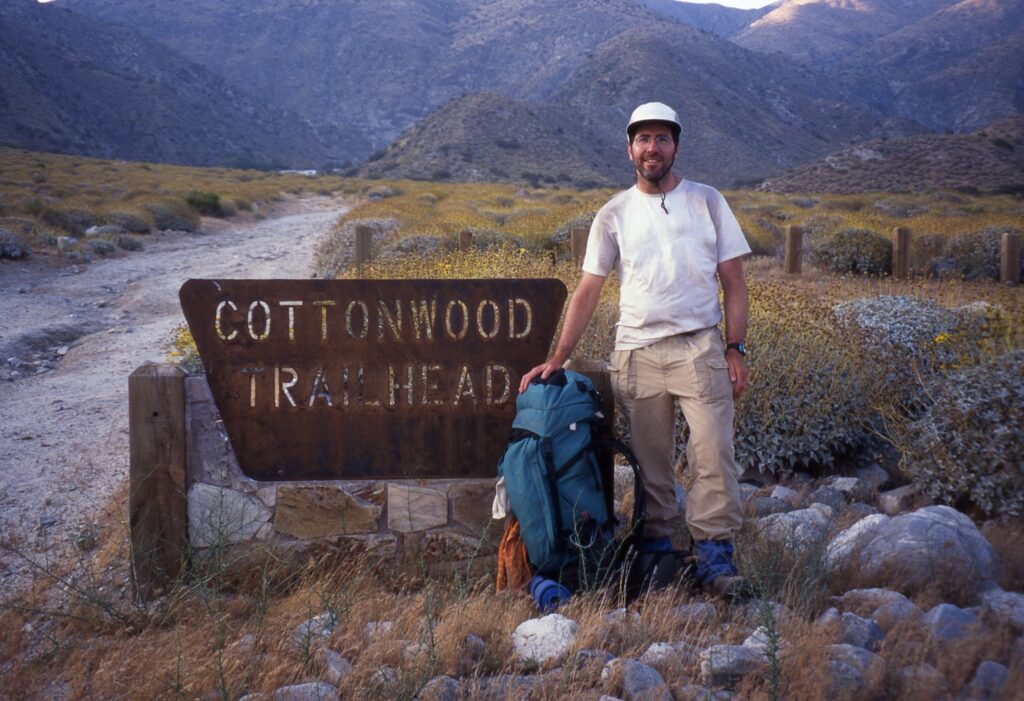
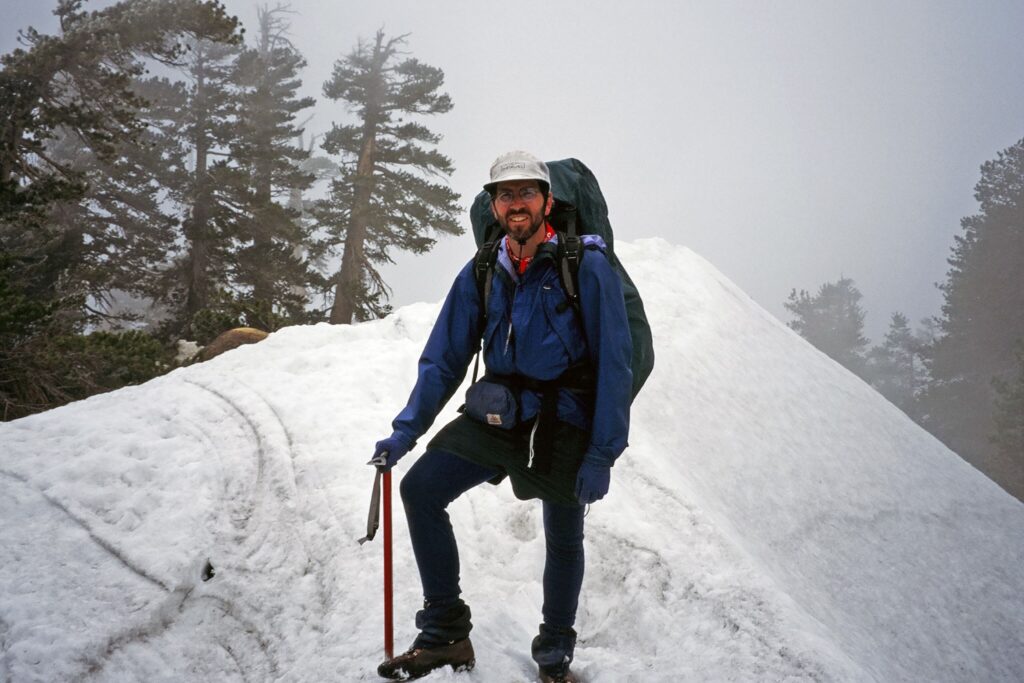
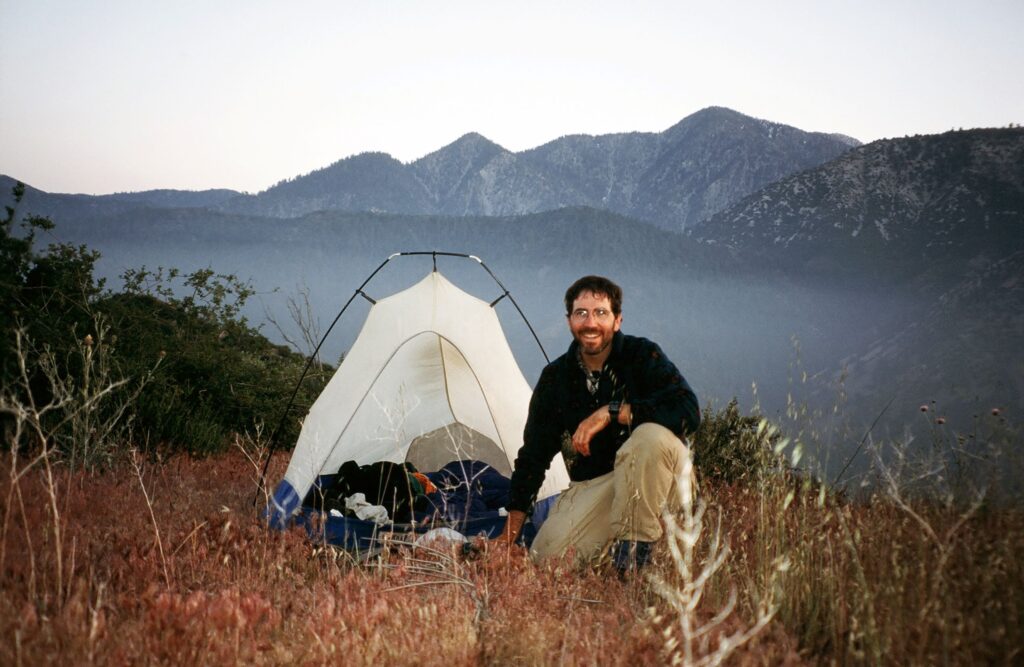
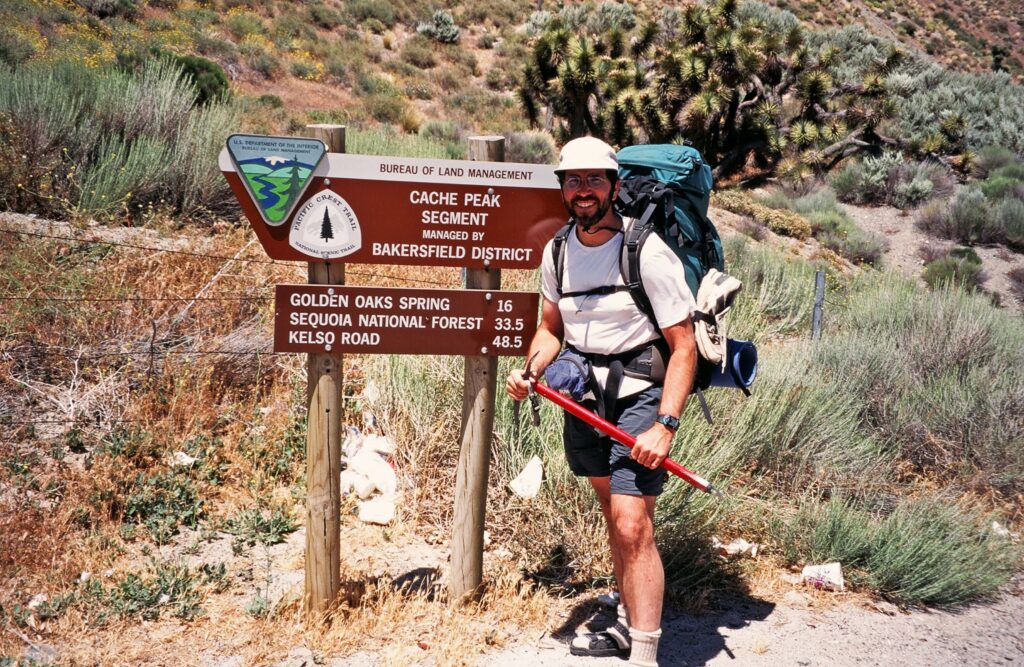
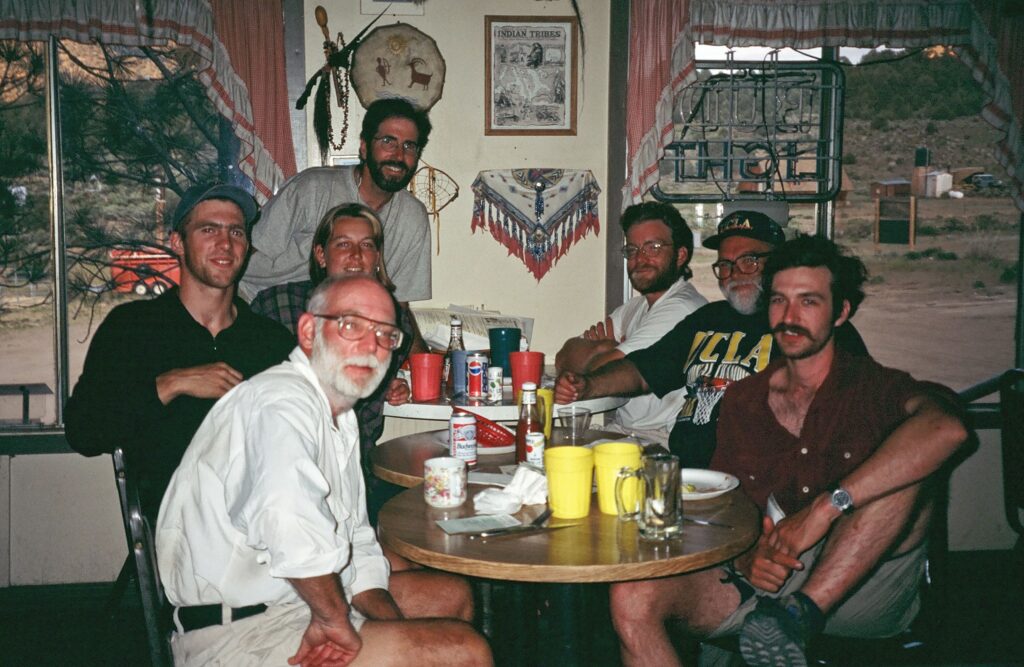
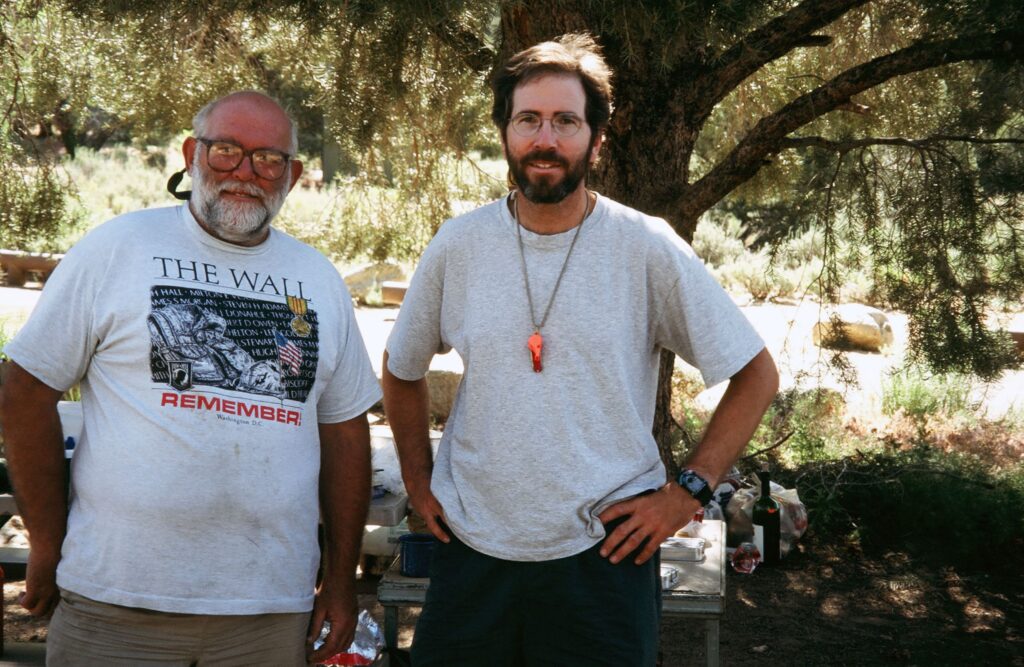
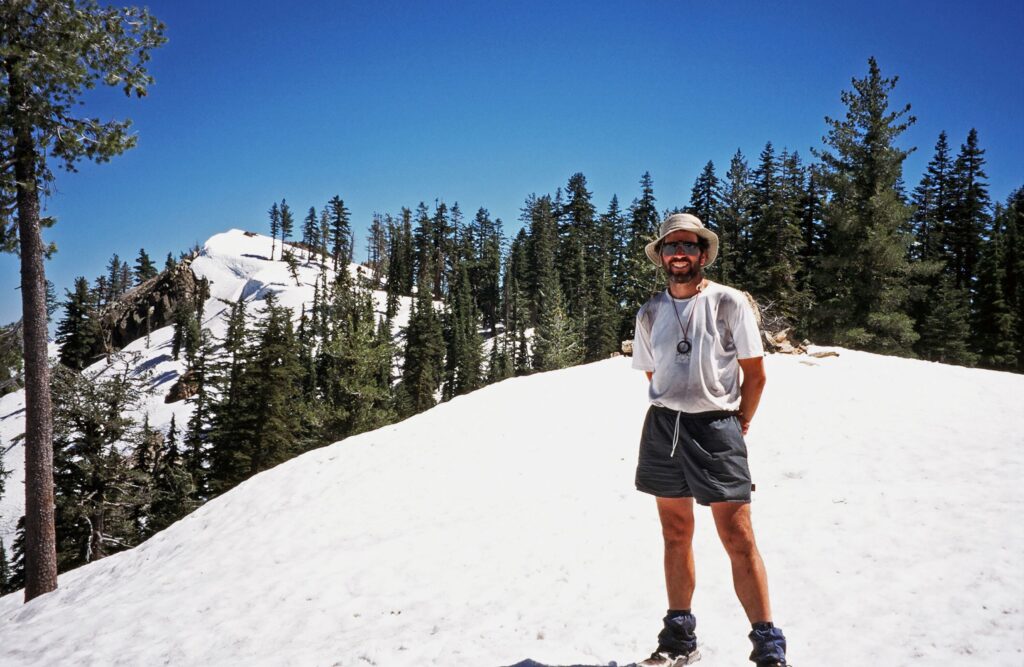
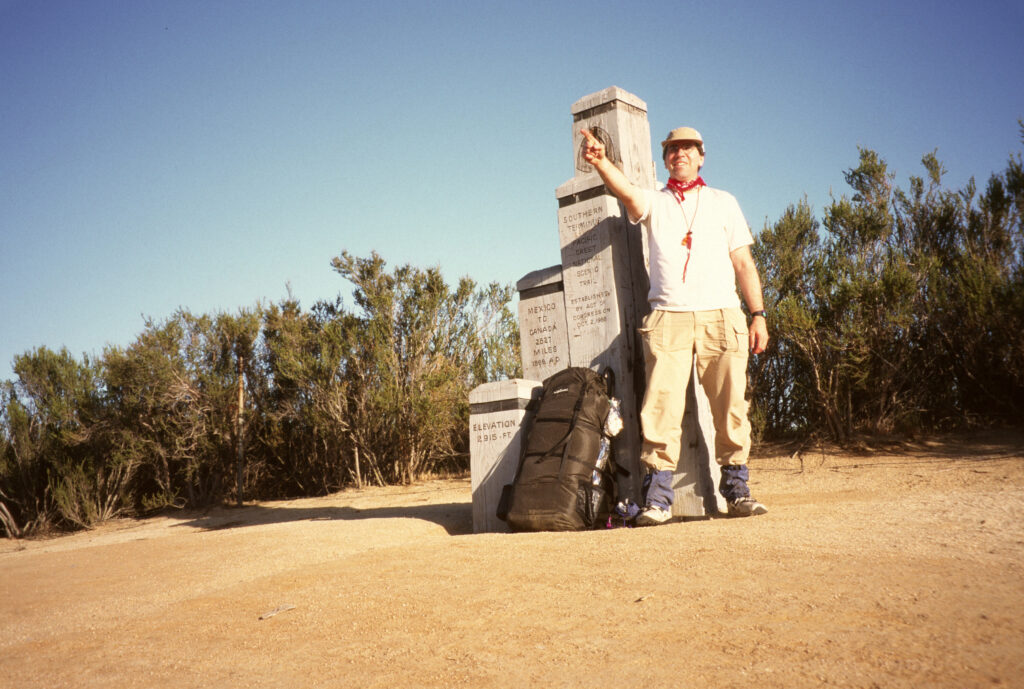
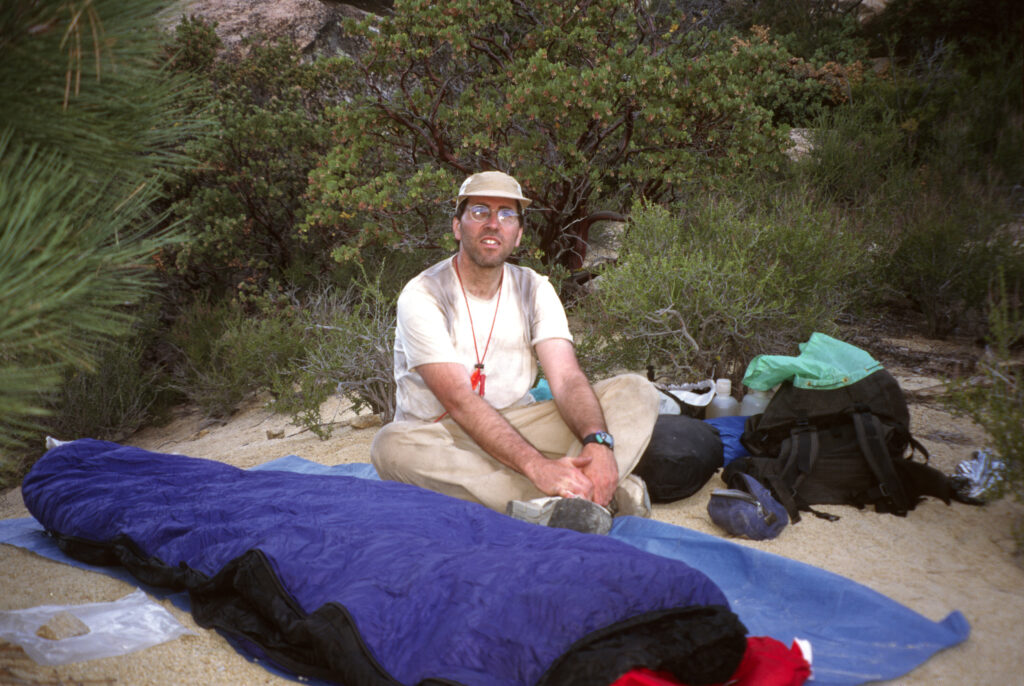
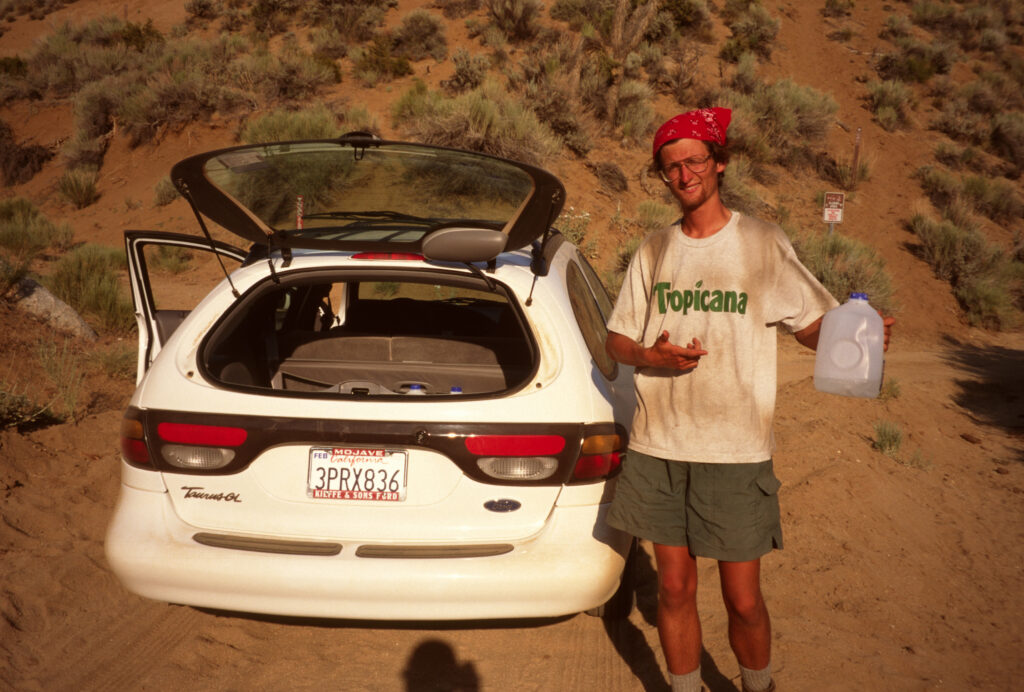
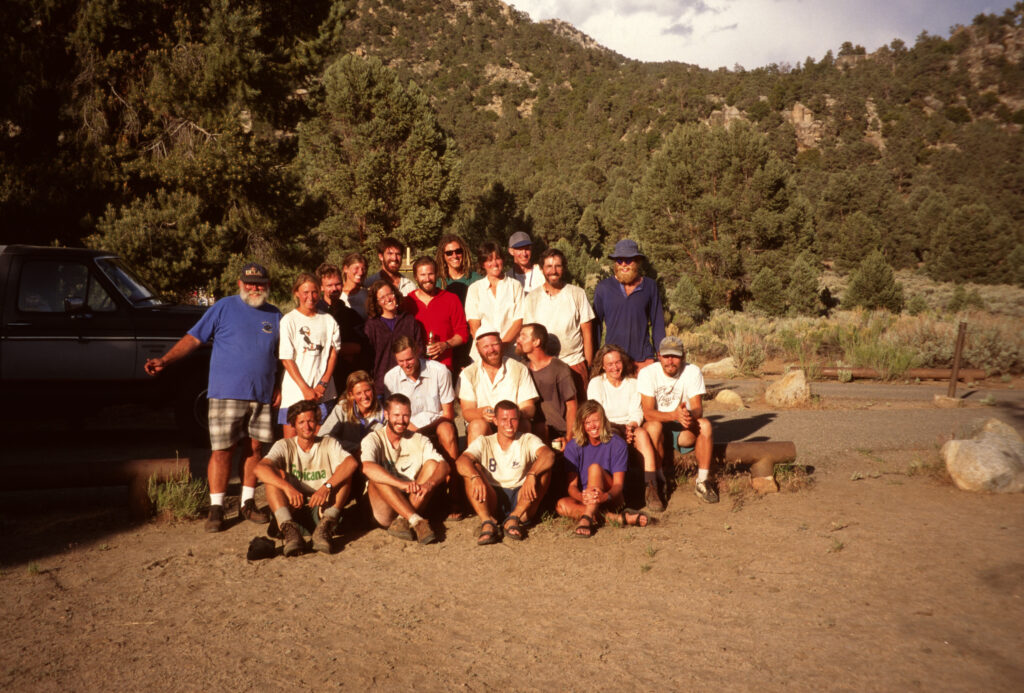
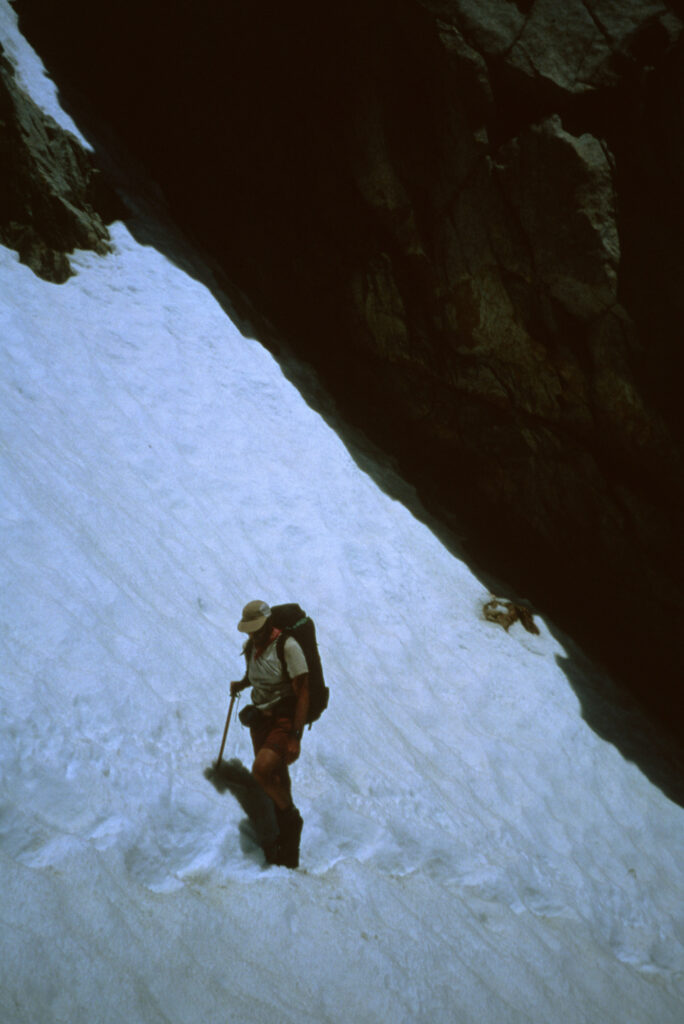
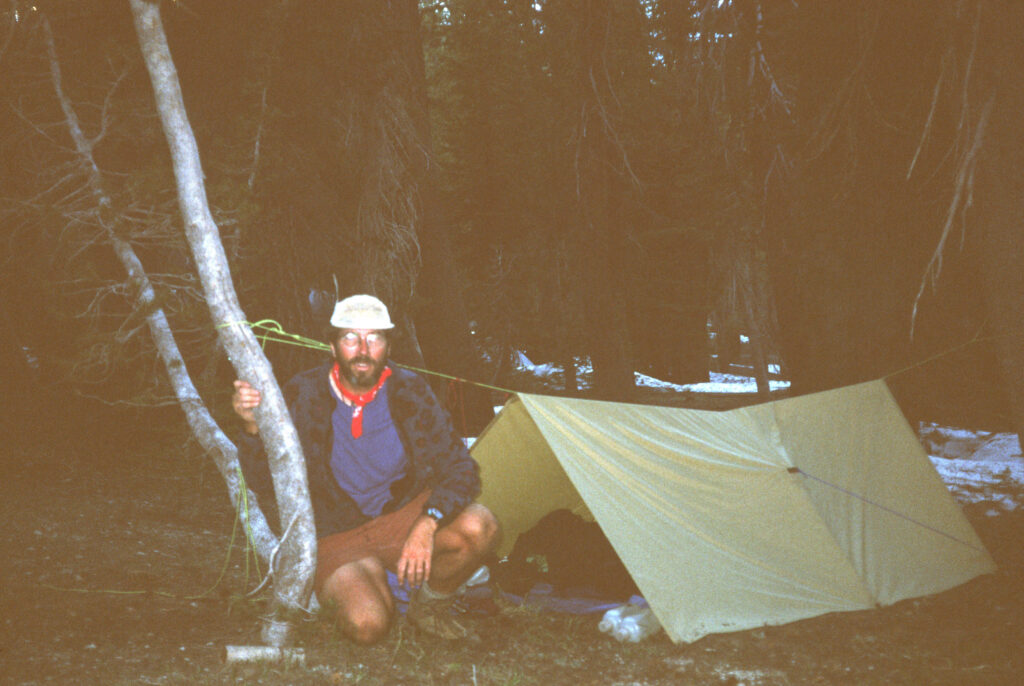
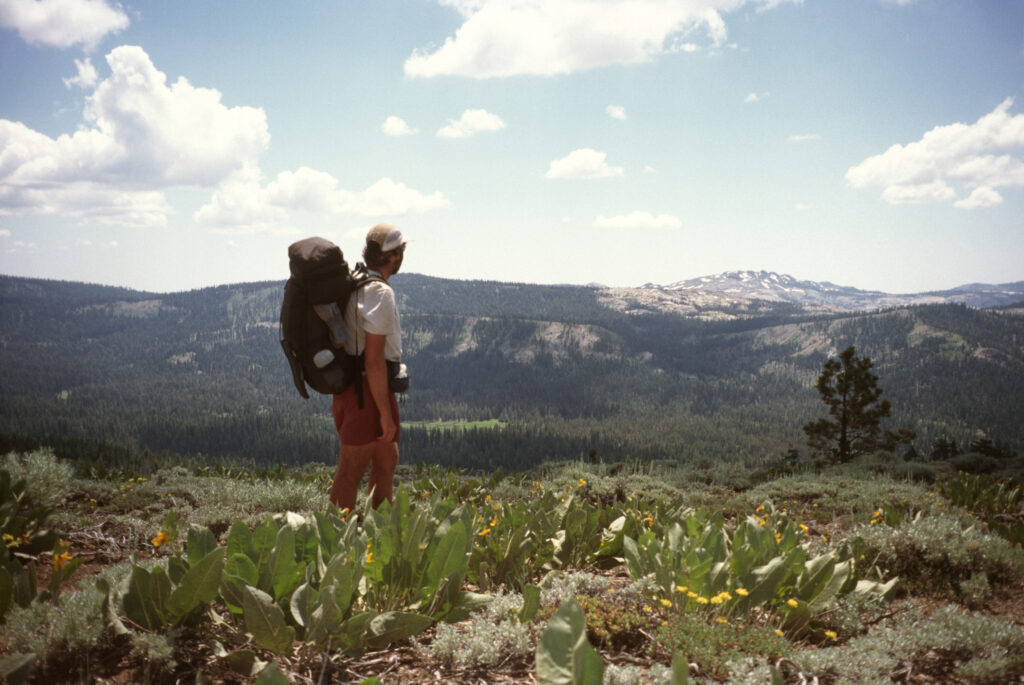
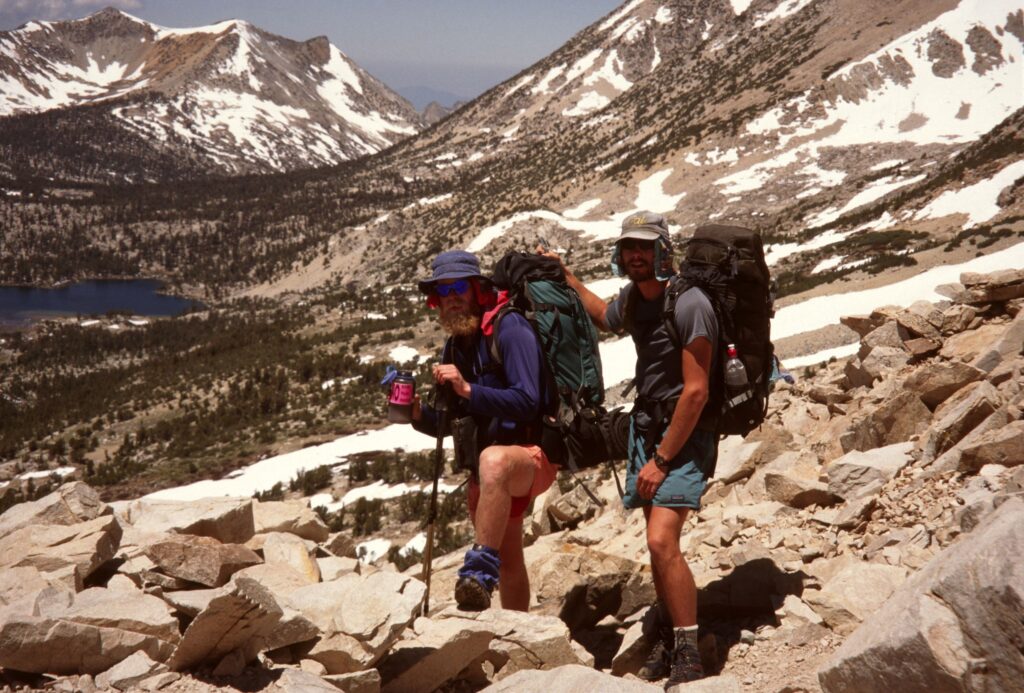
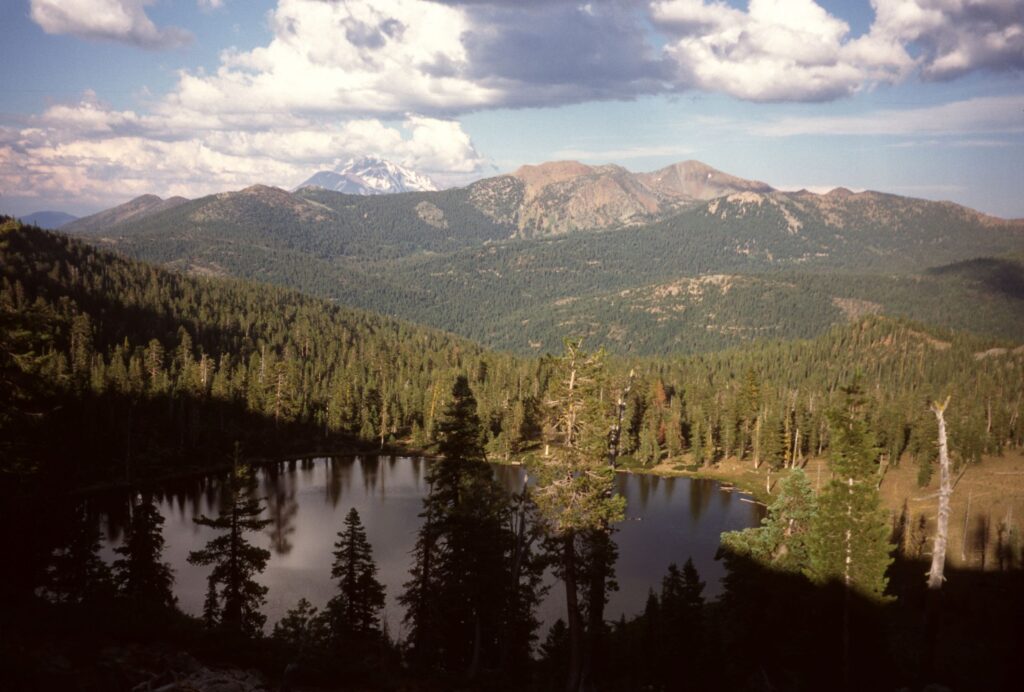
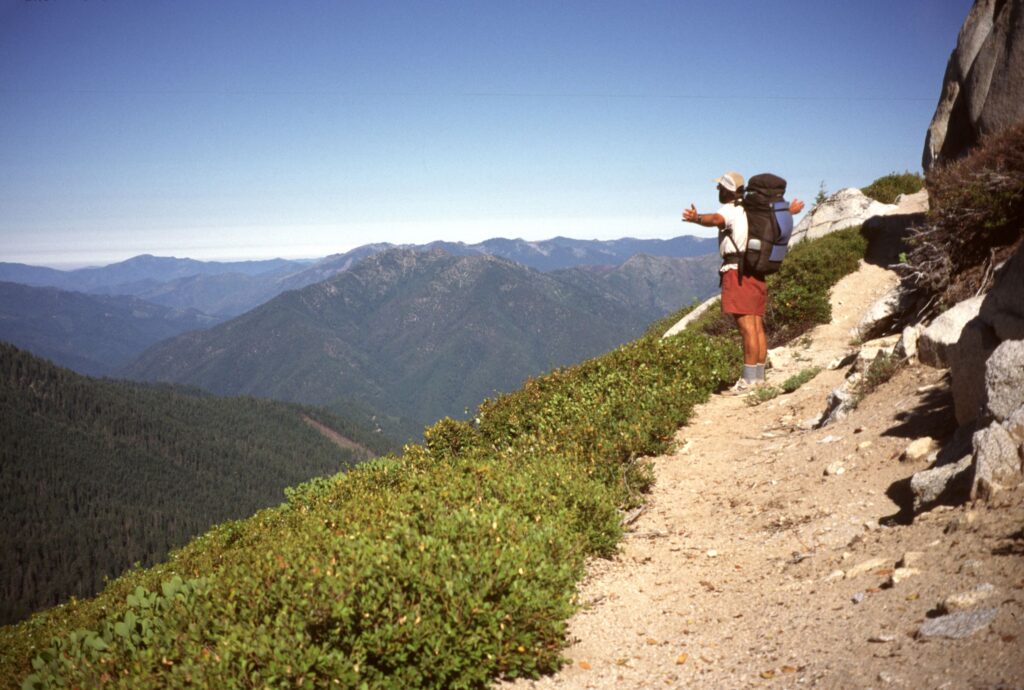
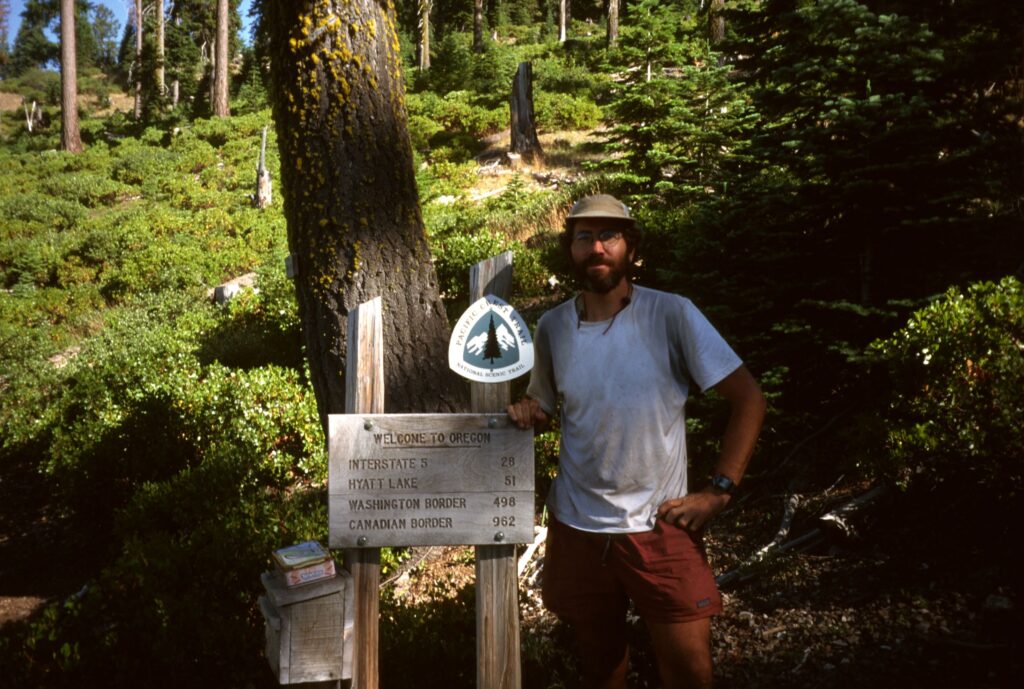
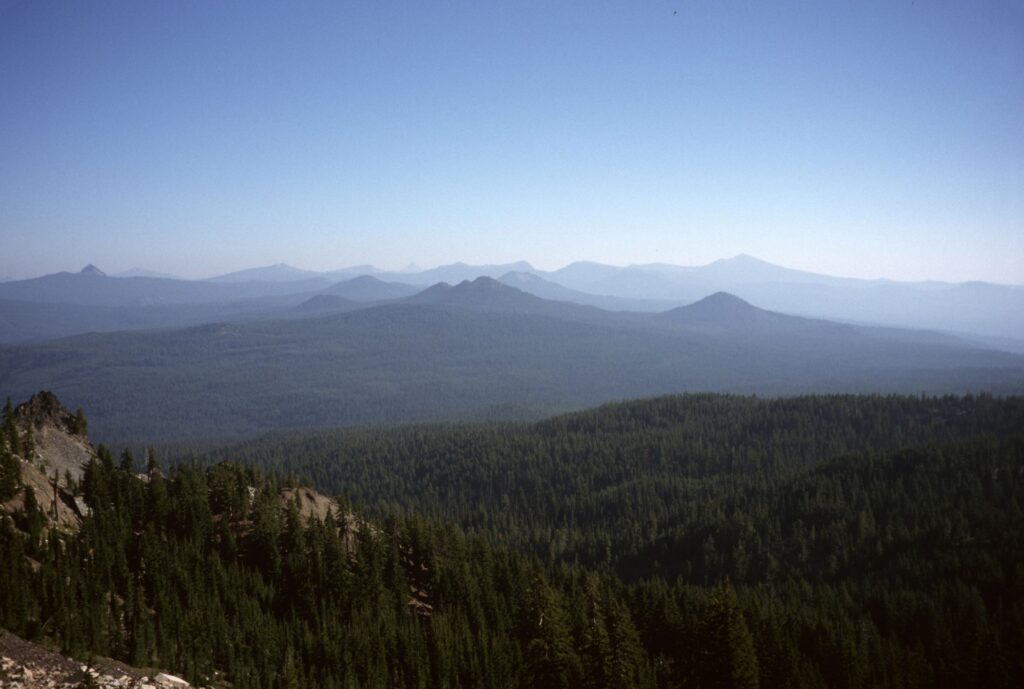
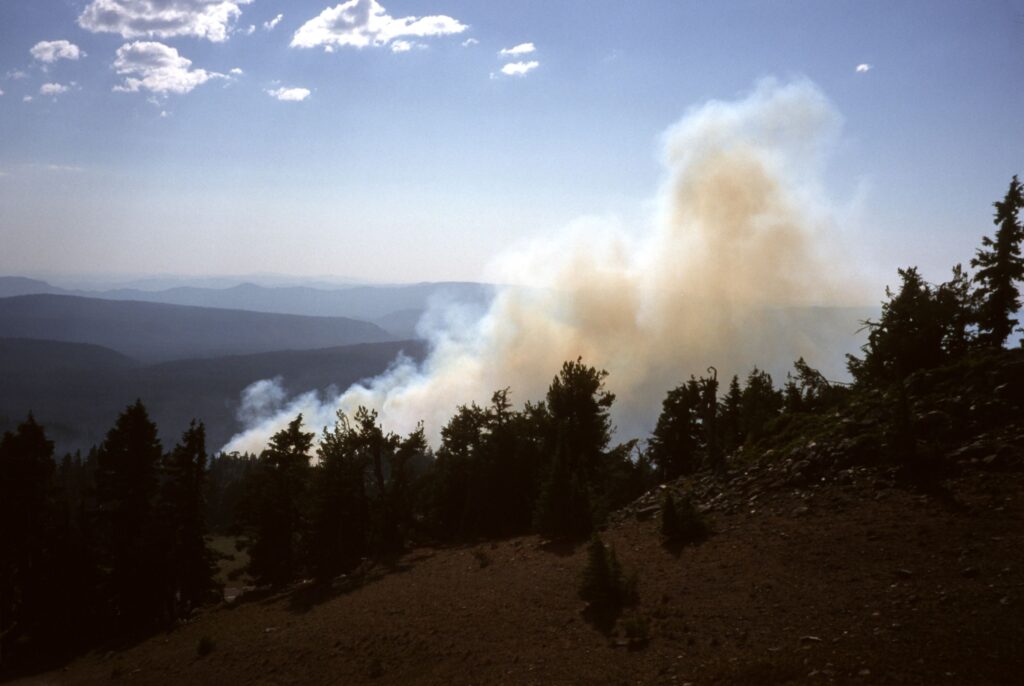

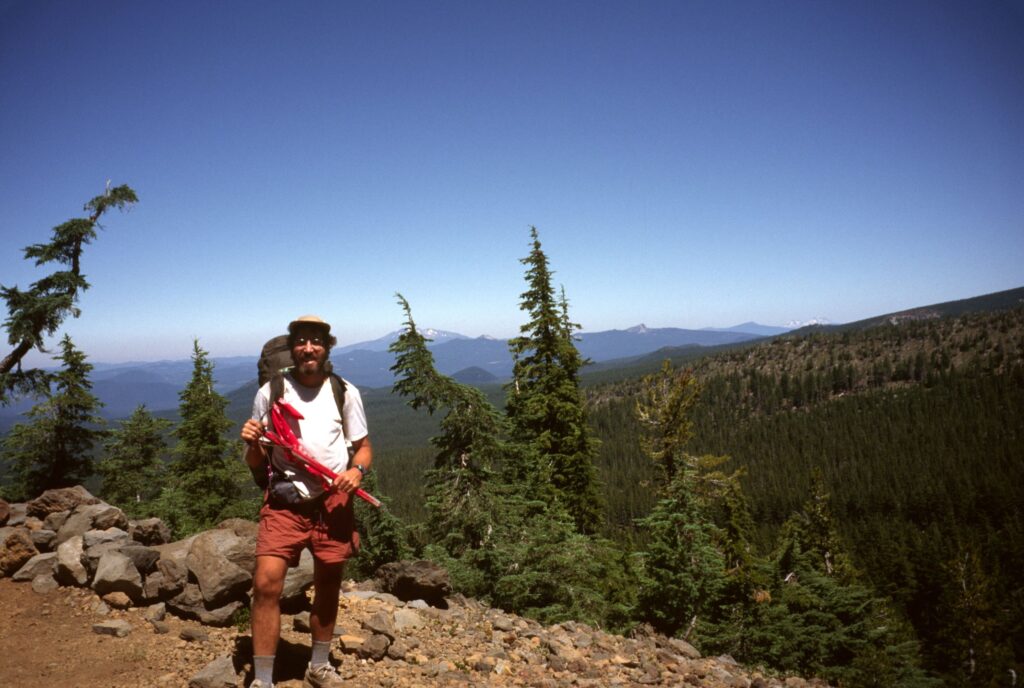
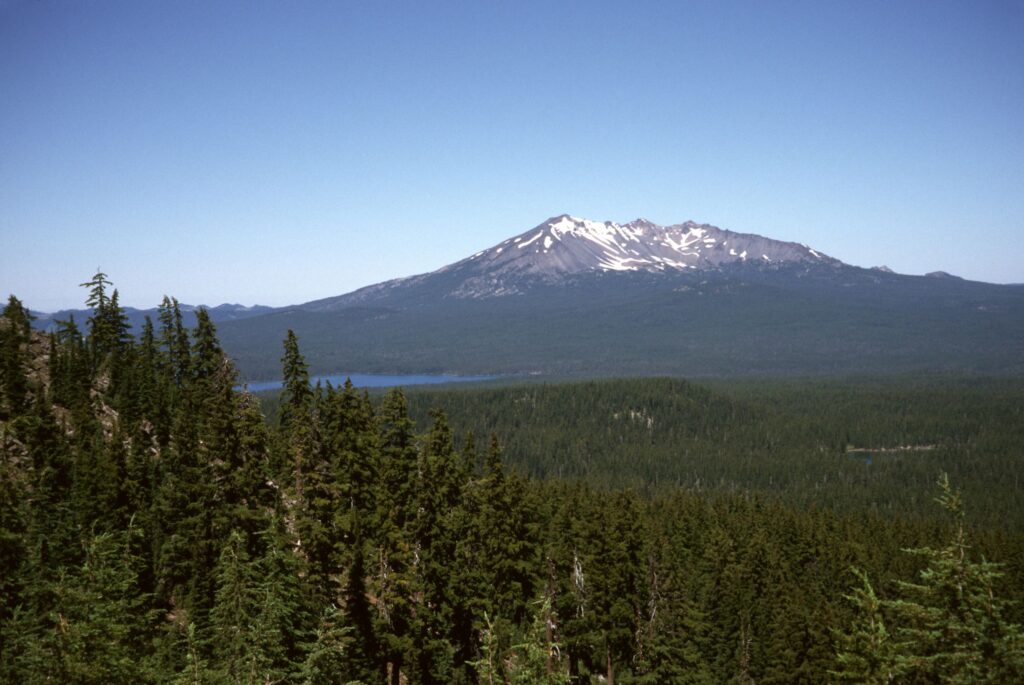

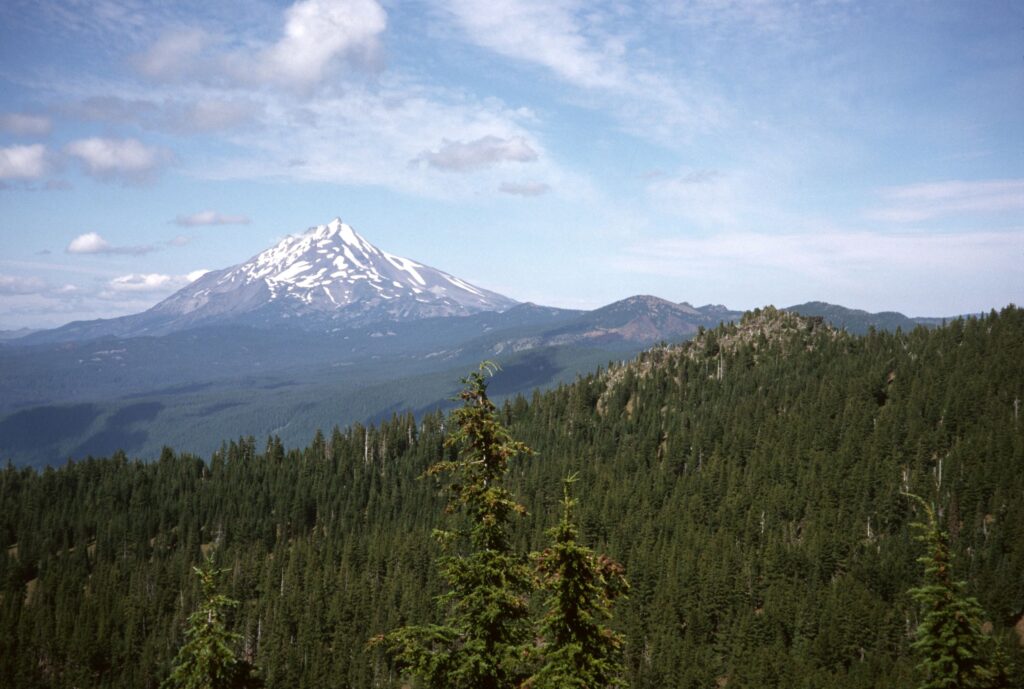
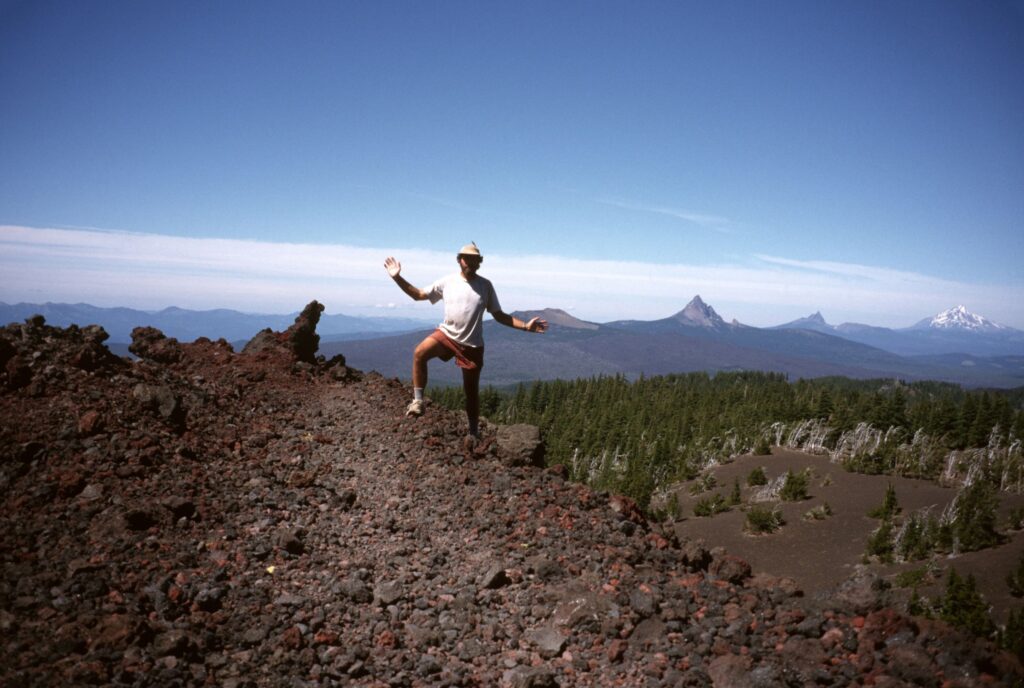
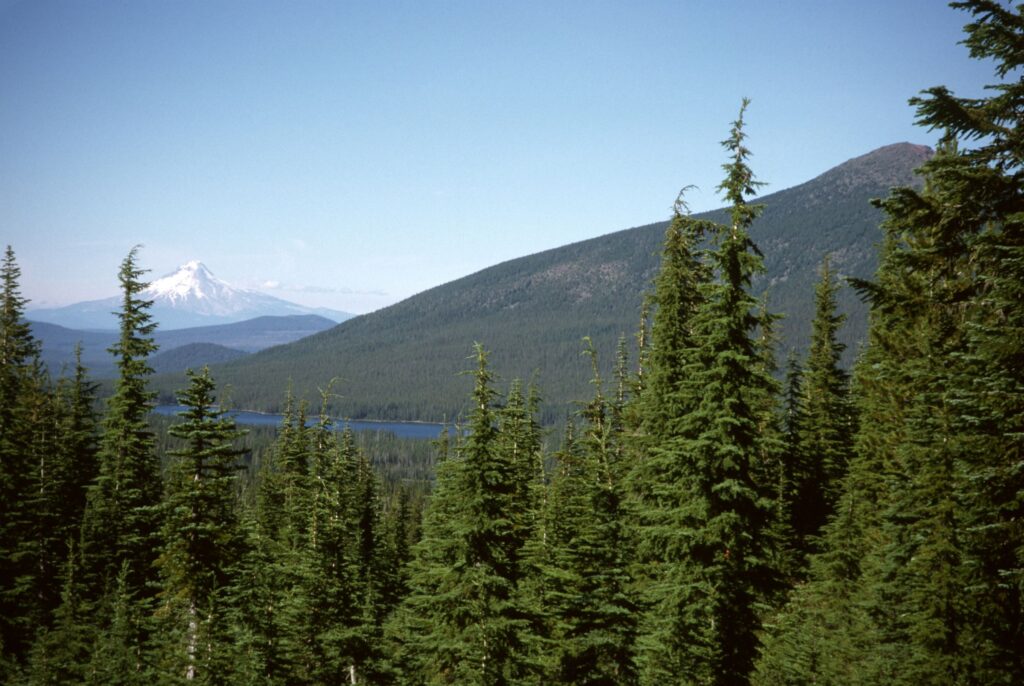
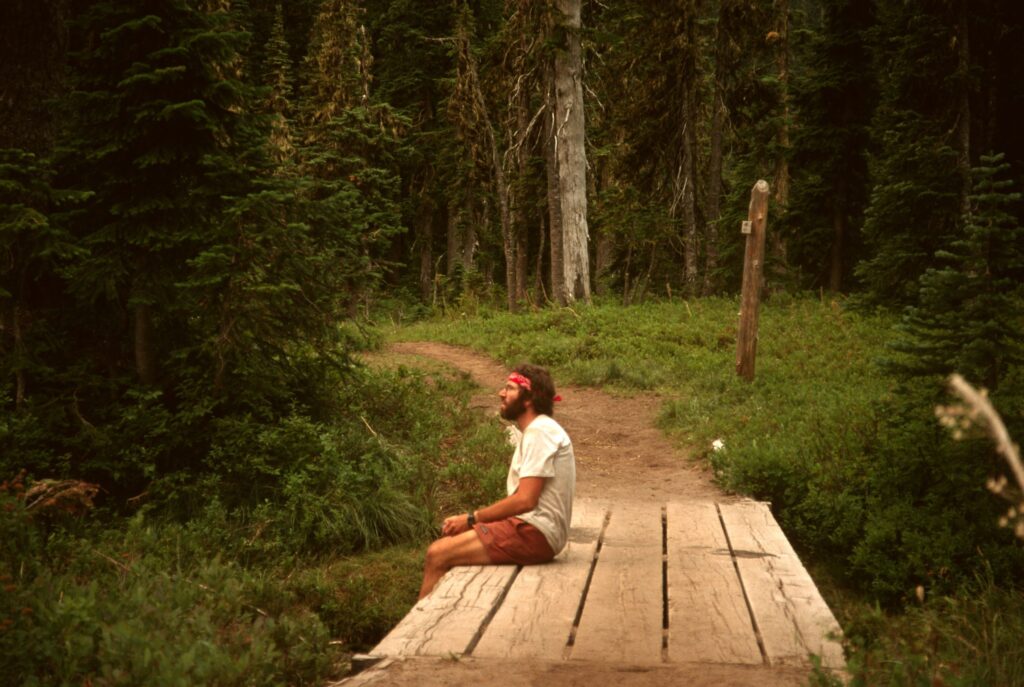
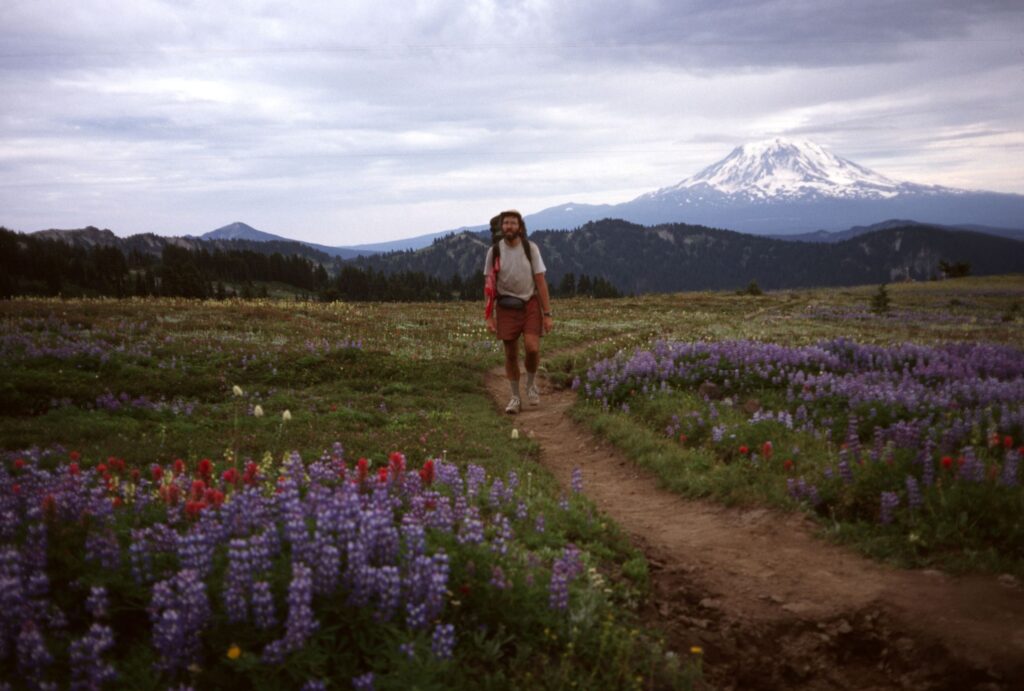

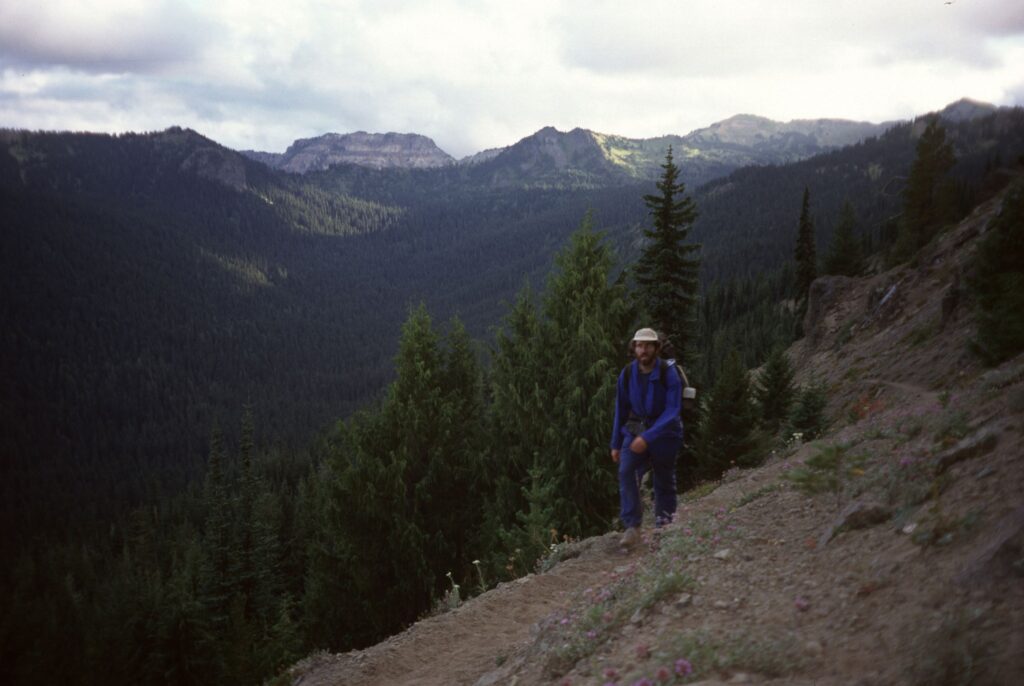
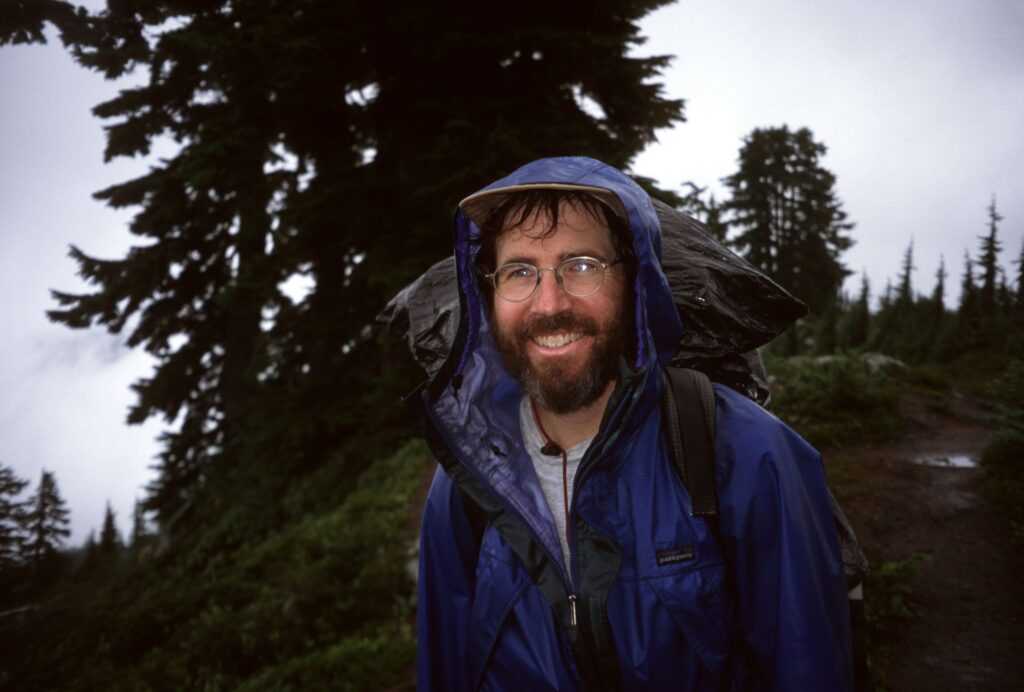

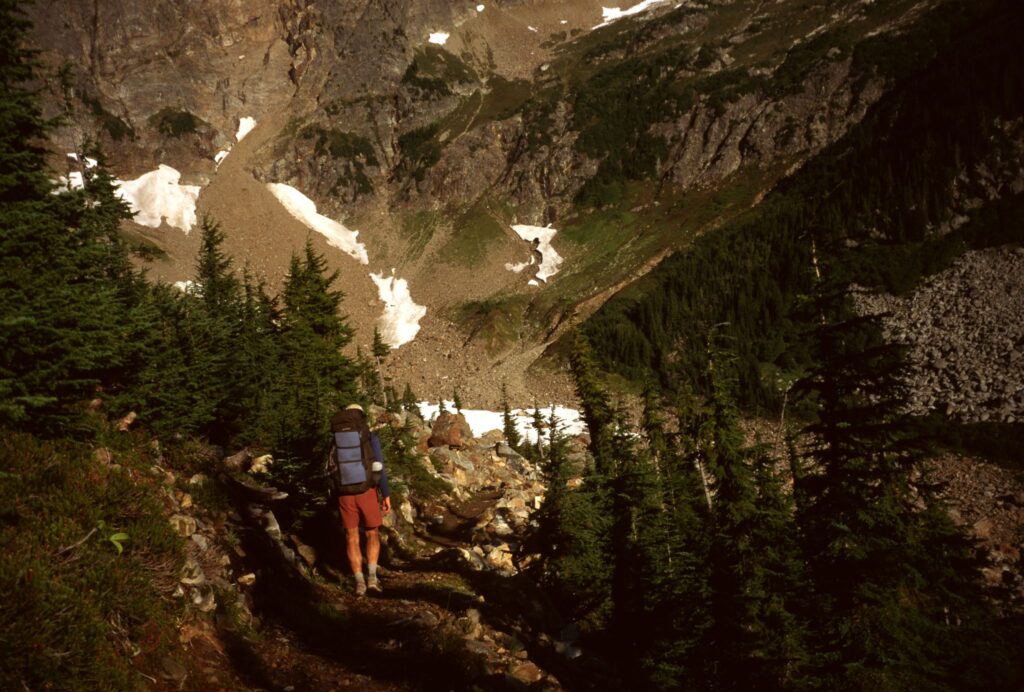
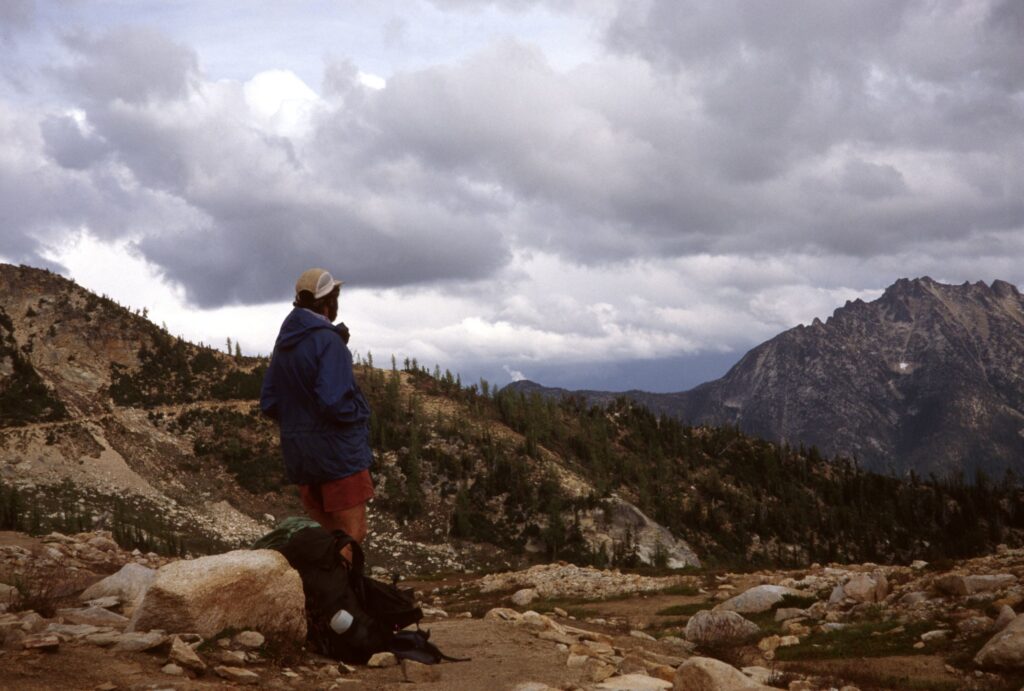
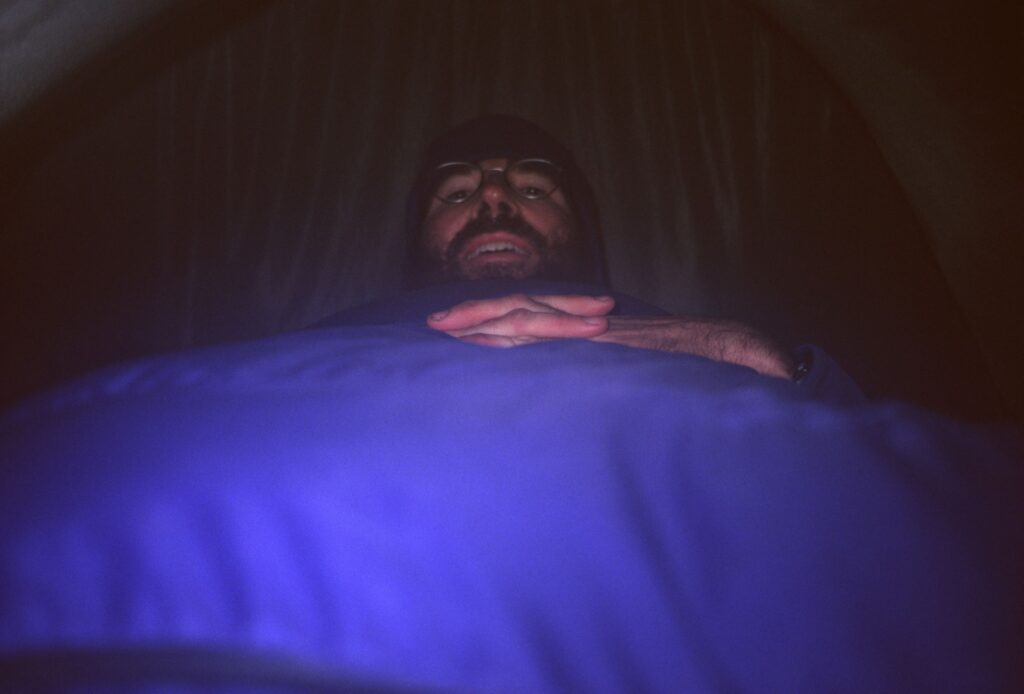

Roger! This is great! Thanks for posting this wonderful history of your inspiring, early PCT hike. I love the photos.